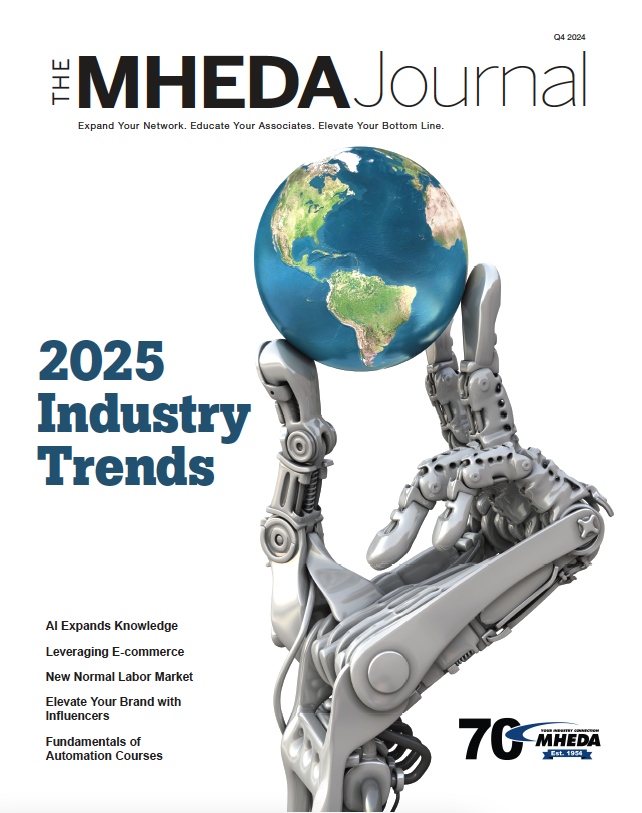Attracting and Retaining Hourly Employees
June 27, 2023
As the workforce evolves, making hourly workers feel part of the mission is important.
By Brian Devine
President and CEO, Ignite Industrial Professionals
Hourly employees think differently about their jobs than salaried employees, period. I did not realize that until 2007, when I initiated a national survey of hourly employees to identify their preferences and priorities related to their jobs. Up to that point, I assumed that most people thought about their jobs the same way that I thought about my job. I was wrong.
One of the most basic things that we learned from the thousands of hourly employees who completed the survey over the last 16 years, is that the starting pay rate of a job is the single most important aspect they consider when looking for a job. When this same question was asked to salaried workers, the most common response is that they want to enjoy the work. For these salaried employees, compensation or pay ranked third or fourth in terms of importance when looking for a job.
So, why does pay rate rank first for hourly employees and third or fourth for salaried employees? Think back to that psychology class you took in high school. You probably learned about Maslow’s Hierarchy of Needs. In 1943, psychologist Abraham Maslow published a paper, “A Theory of Human Motivation,” where he identified five basic levels of human needs.
Starting with our most basic need (Level 1) for food and shelter, the next basic need (Level 2) is safety and security, and the subsequent levels include social relationships, self-esteem, and finally, self-actualization. It’s only when people stabilize their lives in one level that they are able to move to the next. Many hourly employees have such modest incomes that they spend most of their lives in the bottom two levels of Maslow’s hierarchy. They are living paycheck to paycheck, just trying to pay the rent and praying for no unanticipated expenses to pop up, like a car repair or an extra $20 for a child’s school field trip.
In large measure, salaried employees have their most basic needs covered. They have enough money to pay for groceries, put gas in the car, and pay their rent or mortgage. When they hit a financial downturn, they can use credit cards to get them through a short-term crisis or emergency. Many hourly employees simply don’t have that as an option.
Companies often boast about impressive benefits packages: health insurance, 401k, and tuition reimbursement. A 401k is so far beyond the grasp of many hourly employees that when managers boast about the company’s robust 401k matching funds provision, the hourly workers think, “I’m just trying to pay my rent next week, I’m not trying to save for retirement 20 years from now.”
Don’t get me wrong. I believe executives have only the very best intentions when they determine the benefits packages their company offers employees. But what the benefits manager may not consider is the fact that the medical insurance plan requires a contribution by the employee, thereby reducing his or her take-home pay. That $30 weekly payroll deduction for health insurance may be needed for more immediate expenses, like gas money for the week.
My recommendation is for companies to review their benefits package from the perspectives of both hourly and salaried workers. While the 401k match may be appealing to many salaried employees, some of the hourly employees may prefer a subsidy to help cover the high cost of children’s daycare, or they may prefer to have the cost of public transportation subsidized or be provided a discount on basic mobile phone or internet service.
Over the last 40-plus years, the social contract between employee and employer has changed dramatically. Forty years ago, it was not uncommon for someone to go to work for a company and expect to retire from that same company, 30 years later, with a modest pension. In my opinion, two big shifts in commerce changed that: 1) the offshoring of manufacturing; and 2) the dramatic increase of mergers and acquisitions.
When companies closed their manufacturing operations in the states and moved them to China and other countries, primarily to lower labor costs that sent a loud message to the workforce: “Your job is not guaranteed, even if you have worked here for 20 years.”
In the mergers and acquisitions space, when one company acquires another, there is a financial motive to eliminate any redundancies in the newly combined company, and that often means eliminating positions and reducing the number of employees. That also sent a message: “Your job is not guaranteed, regardless of your performance.”
The unintended consequence of those two commercial trends eventually programmed workers to become less loyal to their companies. I often remind executives that employee loyalty mirrors employer loyalty. If companies are not loyal to their employees, it’s unrealistic to think that employees will be loyal to their employers. That is one of the factors that led to the Great Resignation so prevalent during the pandemic.
In addition to the change in workers’ mindsets over the last few decades, another big challenge faces the United States’ labor force: math. More specifically, numbers and percentages.
From a numbers standpoint, the birthrate in the U.S. has declined from 23.7 per 1,000 people in 1960 to 10.9 per 1,000 people in 2020 (according to the U.S. Census Bureau). That statistic creates a dearth in the sheer number of workers available.
From a percentage standpoint, the number of people in each generation who attend college is increasing. Assuming that attending college indicates more people would prefer a white-collar job over a blue-collar job, the blue-collar workforce is shrinking dramatically. According to the Bureau of Labor Statistics, 46 percent of baby boomers attended college, leaving 29.7 million people available for blue-collar jobs. Fifty-seven percent of Gen X’ers attended college, and 67 percent of millennials attended college, leaving 15.2 million people available for blue-collar jobs. The blue-collar workforce declined by 50 percent in just two generations.
As an employer, the following three recommendations can help attract and retain hourly workers in this very competitive labor market:
1. Survey your hourly employees to determine their priorities and their preferences. I’ll be happy to share the baseline questions you should ask.
2. Review your compensation and HR policies from the perspective of your hourly employees. If you have mandatory overtime, I encourage you to eliminate it and switch to voluntary overtime. If your attendance policy does not provide enough flexibility for workers to attend their child’s kindergarten play or soccer match occasionally, without incurring an attendance infraction, change it. If your pay rates are not competitive for the market, increase them.
3. Demonstrate genuine respect every day, on every shift, for the hard work exerted by your essential workers. It costs nothing for a supervisor or a manager to stand at the time clock at the end of the shift and say “thank you” or “we appreciate you” to every single person as they clock out.
In summary, it’s important to realize that there is a chasm between the senior executives of a company and their essential hourly workers. I often say that there is a big difference between the people who shower before work compared to the people who shower after work, and it’s incumbent upon leadership to recognize that and bridge the gap.








